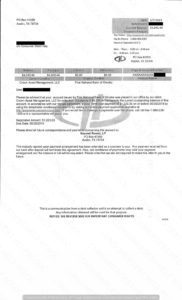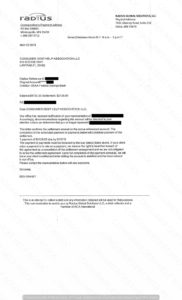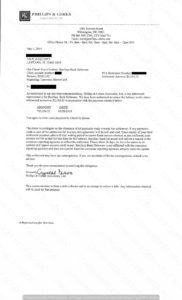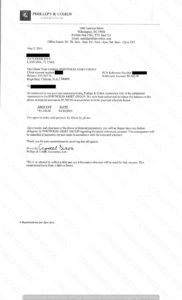Debt Relief Specialist wants to share a settlement letter from Macy’s/Citibank. Bal. $1204.07 Offer $481.63 Savings $722.44

Debt Relief Specialist wants to share a settlement letter from Macy’s/Citibank. Bal. $1204.07 Offer $481.63 Savings $722.44

Debt Relief Specialist wants to share a settlement letter from First National Bank of Omaha. Bal. $4045.44 Offer $1220.00 Savings $2825.44

Debt Relief Specialist wants to share a settlement letter from Citibank. Bal. $10,268.92 Offer $3594.12 Savings $6674.80

Debt Relief Specialist wants to share a settlement letter from Capital One. Bal. $12,528.75 Offer $4386.00 Savings $8142.75

Debt Relief Specialist wants to share a settlement letter from USAA. Bal. $4730.55 Offer $2129.00 Savings $2601.55

Debt Relief Specialist wants to share a settlement letter from Barclays Bank. Bal. $9012.92 Offer $3154.52 Savings $5858.40

Debt Relief Specialist wants to share a settlement letter from Sears/Citibank. Bal. $13,352.78 Offer $5342.00 Savings $8010.78

Phishing has been a huge problem, stealing information, damaging peoples computers. Phishing is when someone uses fake emails or texts – even phone calls – to get you to share valuable personal information, like account numbers, Social Security numbers, or your login IDs and passwords. Scammers use this information to steal your money, your identity, or both. They may also try to get access to your computer or network. If you click on a link in one of these emails or texts, they can install ransom ware or other programs that lock you out of your data and let them steal your personal information.
Scammers often use familiar company names or pretend to be someone you know. They pressure you to act now – or something bad will happen. They will act like they are from your bank, or even from Amazon with a tracking link.
Dont Take the Bait –
Phishing is when you get emails, text, or calls that seem to be from companies or people you know. But they’re actually from scammers. They want you to click on a link or give personal information (like a password) so that they can steal your money or identity and maybe get access to your computer.
The Bait –
Scammers use familiar company names or pretend to be someone you know. They ask you to click on a link or give passwords or bank account numbers. If you click on the link, they can install programs that lock you out of your computer and can steal your personal information. They pressure you to act now – or something bad will happen.
Avoid the Hook –
Check it out – Look up the website or phone number for the company or person who’s contacting you. Call that company or person directly. Use a number you know to be correct, not the number in the email or text. Tell them about the message that you got
Look for scam tip-offs – You dont have an account with the company. The message is missing your name or uses bad grammar and spelling. The person asks for personal information, including passwords. But note: some phishing schemes are sophisticate and look very real, so check it out and protect yourself.
Protect yourself – Keep your computer security up to date and back up your data often. Consider multi-factor authentication – a second step to verify who you are, like a text with a code – for accounts that support it. Change any compromised passwords right away and don’t use them for any other accounts.
Report Phishing –
Forward phishing emails to spam@uce.gov and reportphishing@apwg.org . You can also report directly to the FTC at their website – ftc.gov/complaint
For more information, visit ftc.gov/phishing or Aba.com/phishing
copyright 2025 Consumer Debt Help Association - 516 N. Dixie Highway, Lantana, FL 33462. All Rights Reserved